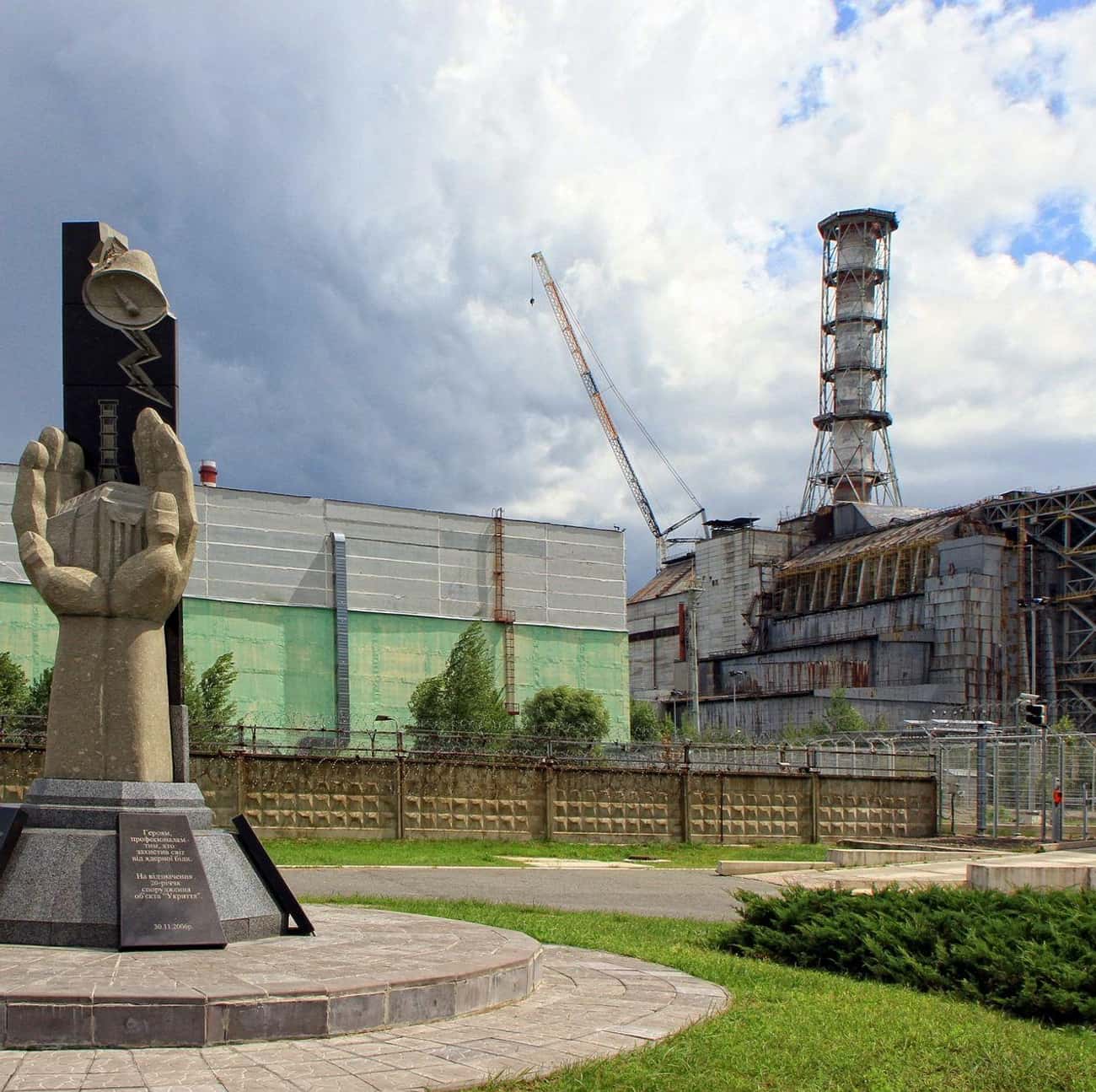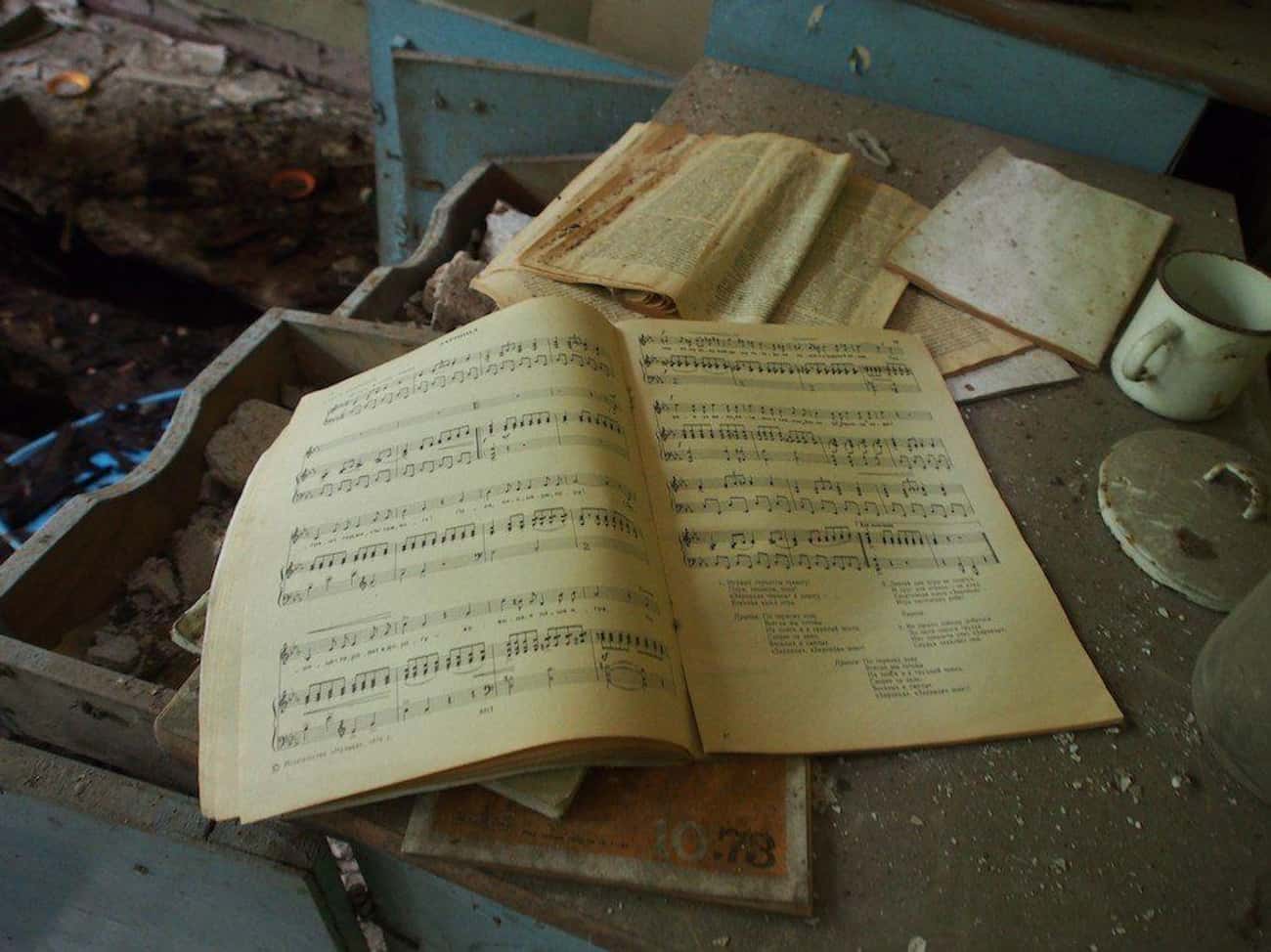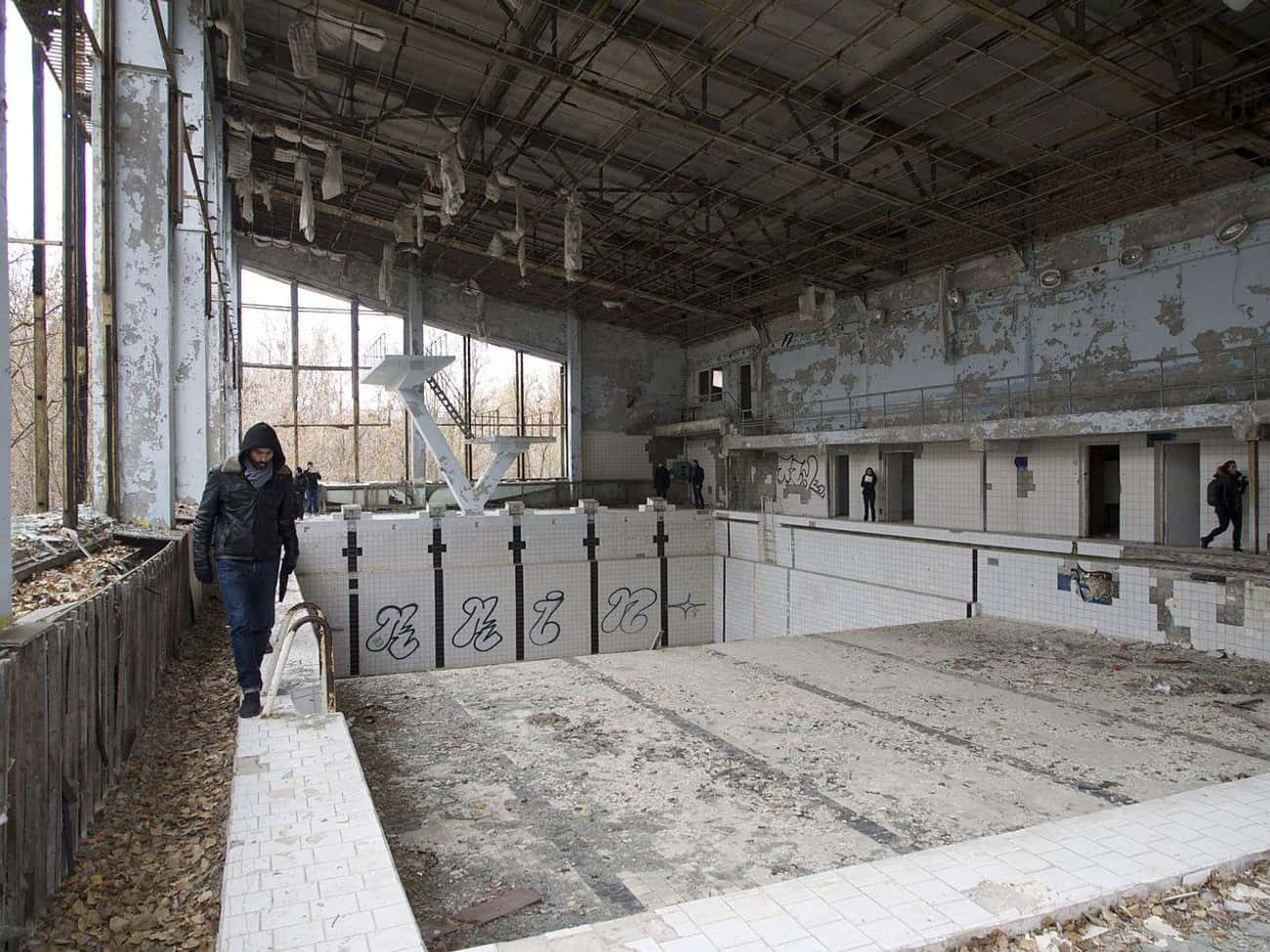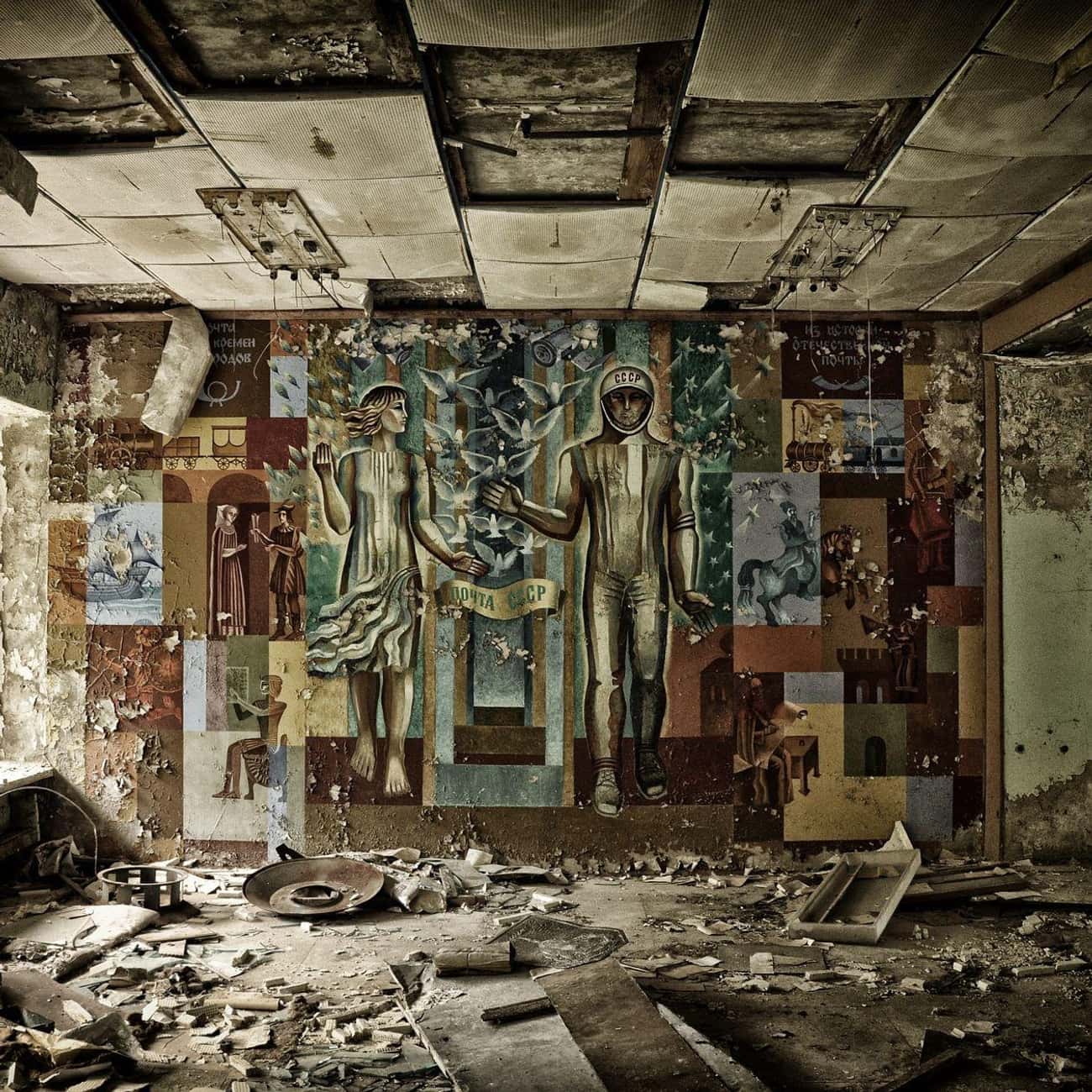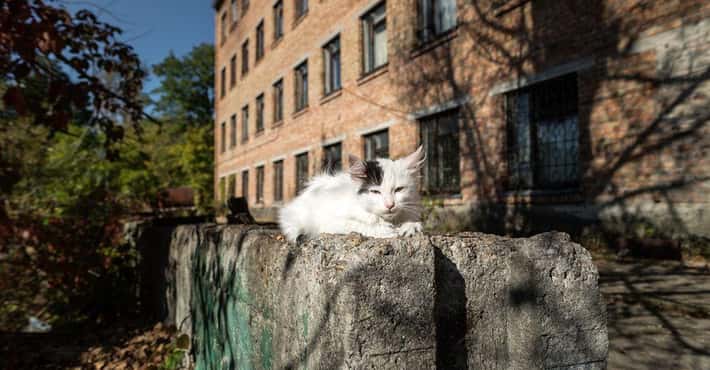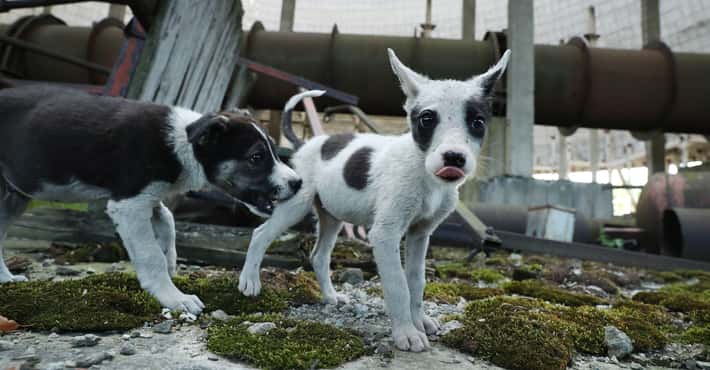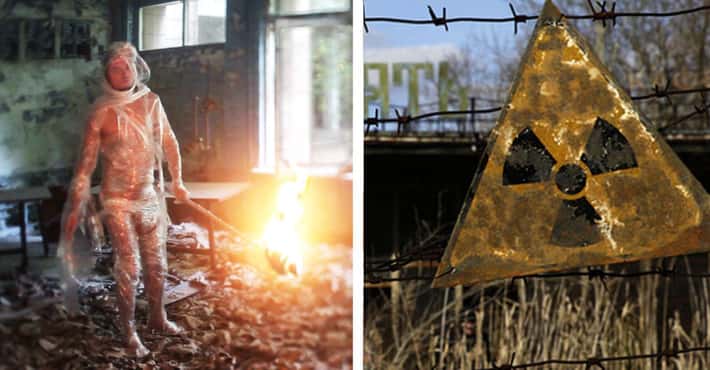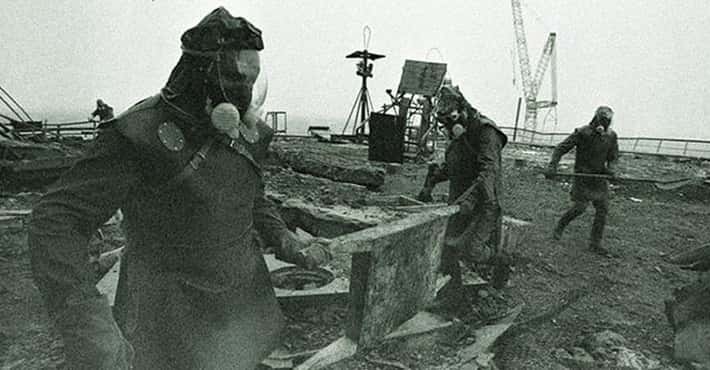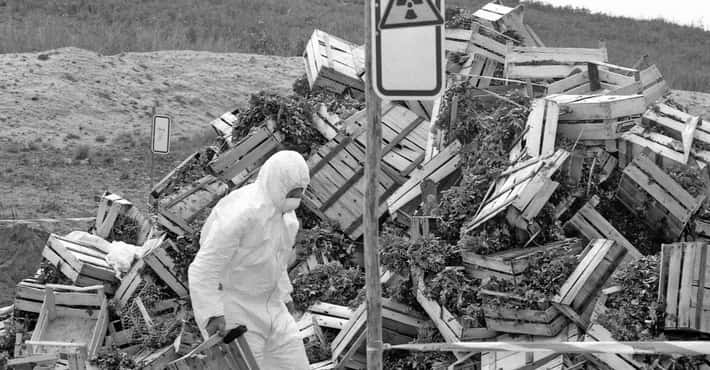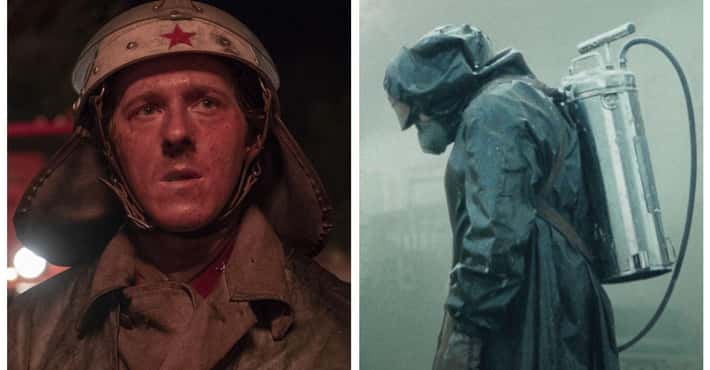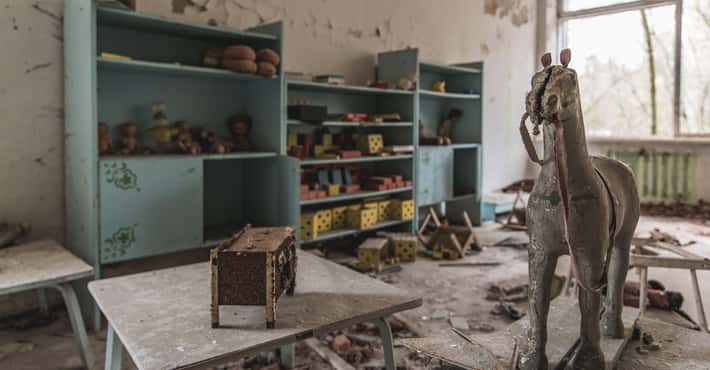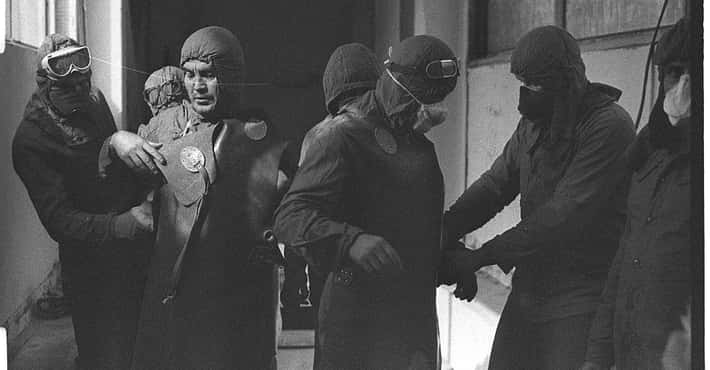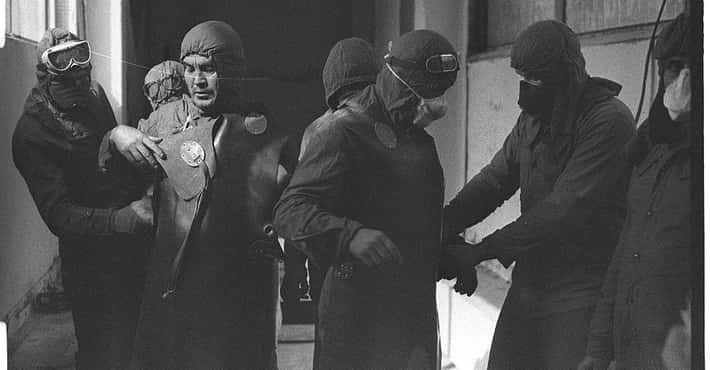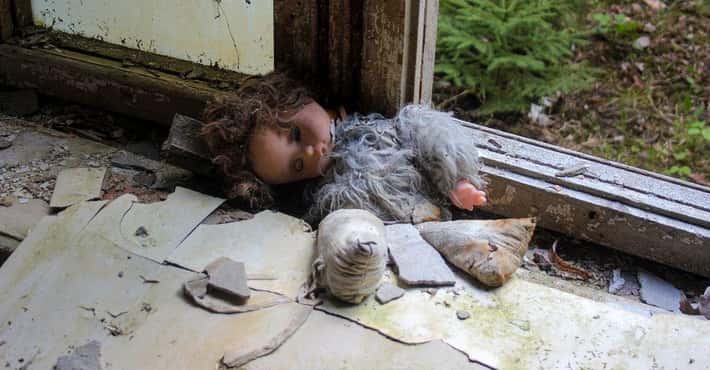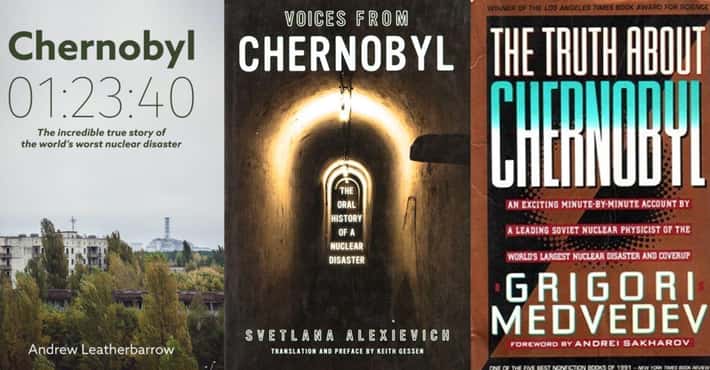Creepy Stories From Chernobyl
- 18,936 VOTES
The Ghosts of Chernobyl
Photo: robarmstrong2 / Pixabay / CC0 1.0As with any site where a number of people have lost their lives, Pripyat is rife with ghost stories. Andrei Kharsukov, a nuclear physicist from New York, told one such story after visiting the area in 1997.
Kharsukov said he went to the power station at 7:30 a.m. and went to the No. 4 reactor sarcophagus, which is where the explosion occurred. He could not go inside due to radiation, but as he took radiation readings, he heard someone screaming for rescue from a fire inside:
I ran upstairs to tell someone, but they said that when I entered the reactor control room, I was the first person to open that door in three years, and the only way to get inside the old reactor is through the doors I came in through. If someone had gone inside the reactor when I was not looking, they would have tripped an alarm that goes off when the reactor door is opened mechanically.
The reactor door requires a password and a handprint, yet someone, or something, was inside. Later that evening, as we were eating dinner outside the building by the river next to the plant, a flood light turned on in the room of the installation. There was no way anyone could be inside. As we ate, we figured there was a power surge or something. Then just as my colleague said that, the light turned off.
- 28,525 VOTES
Performers Were Brought In To Calm Local Residents, And Contracted Radiation Sickness Themselves
Photo: AwOiSoAk KaOsIoWa / via Wikimedia Commons / CC BY-SA 3.0From Redditor /u/creepyjake:
Hi Everyone! I'm Jake [and] I met Yuri in a bar in Finland (this is my Reddit account). Over a couple nights, and some vodka, I recorded his voice to capture the story [and] piece it together. These are his words...his story.
If you were to meet Yuri, as I have, you might not be so doubtful. The man is a gifted musician, a gentle soul, and it was a true gift to meet him. I've shared some of the positive comments with him...but I'm not reading anything negative. Peace.
According to Redditor /u/creepyjake, Yuri's account is as follows:
Please forgive my poor English because it cannot be my primary choice language.
Please call me "Yuri"- I'm a musician in taverns of Northern Europe for drinks and for the generosity of patrons. I was once classically trained pianist - I studied at the St. [Petersburg] conservatory in the late 1970s. I lost my eyesight, and I have numerous illness - I am a survivor of Chernobyl.
As the disaster commencement occurred, I was in state sponsored musical/dance troupe. Our gathering was immediately enlisted by the government to calm village peoples in Pripyat and surrounding area. Mere hours after the meltdown commenced, our bus entered the exclusion zone at checkpoint "Dityatki." We were told not anything, and the soldiers made it forbidden for speaking with the village people.
Imagine not knowing a disaster taking place, yet seeing the strange workings of the radioactivity all around. Everyone was sick and dying, yet quarantined and not allowed to leave the zone. Some believed the world was ending, and we all became resigned to the fact we will certainly die. The soldiers [have] masks and guns, but I could see the fear on his face too! As dead men and women, we gave our best musician and dancer performances ever.
Allow me to describe our final performance at Pripyat: As the music played, the ballerina danced like never before. The passion in the music, and her movements were legendary. She was a beautiful girl, dancing her final dance with love in her heart. She allowed her long flowing hair down, and it seemed to float mystically in the air. As the music crescendoed, and she spun delicately around, her hair was falling away from her head. Gently, long golden strands of her hair floated to the floor as she danced. I saw the blood leaking from her nostrils, and down cheeks from her ears. The sparse crowd knew the face of death, and it was surely the final dance. The children ran to her with flowers from the meadow...their hair and teeth had fallen out already. The petrol generator stalled and for several moments, we were in darkness. To my utter horror, I saw the flowers, and the children glowing in the dark.
That night I climbed out [the] window of the lodging house. The soldier who saw me lowered his carbine when our eyes locked in silence. I ran through the alley and I hot wired the car. I drive non stop to the northwest - on back roads I learned as a boy - avoided checkpoints imposed by military. I siphoned the petrol from other vehicles in the night. I began missing my vision during my flight, and by the time I escaped USSR, I was blind. I am only musician who lived.
- 34,497 VOTES
The Elephant's Foot
Video: YouTube
Elephants are cute, so you'd think anything named after their feet would also be cute. You'd be wrong, however, as this particular euphemism refers to a flow of hot lava that will end you after 300 seconds - that's a mere five minutes - of exposure. And not quickly, either, as your life will reportedly slowly cease within two days.
According to Kyle Hill in an article for Nautilus, this black lava was discovered by emergency responders who entered a steam corridor underneath the No. 4 reactor. The crews' radiation sensors warned them to stay away.
What happened was this: The radioactive particles got so hot, they melted and turned into a flow of lava, which in turn melted through the bottom of the reactor vessel and all the way down until it cooled enough to form the big glop you see above.
Photos of the "elephant's foot" were taken via a camera on wheels. It was determined that the blob consisted mostly of concrete and other materials that the fuel melted on the way down. Still, going near it was a bad idea, and experts advise not going near it even today.
- 43,533 VOTES
An Entire Village Was Bulldozed - Only Its Kindergarten Remains Standing
Photo: Clay Gilliland / Flickr / CC BY-SA 2.0Kopachi was a small village about 4.5 miles southwest of the Chernobyl plant. After evacuating the village, Soviet authorities found such high radiation levels in the area they decided to bulldoze everything in Kopachi other than the elementary school and bury it all in the soil.
Unbeknownst to those who made this decision, burying radioactive materials results in their radioactivity leaking into the ground. In the case of Kopachi, the radioactivity of buildings became part of the soil and water table, making the region uninhabitable for generations. The surviving school is an attraction for ruin-photographers, who have captured eerie Kopachi images of old toys, school materials, dolls, and stuffed animals three decades on from the meltdown.
- 55,467 VOTES
The Soviet Government Sent In Soldiers When The Meltdown Destroyed Robot Cleaning Crews
After evacuating the residents of Pripyat, the city bordering the Chernobyl power plant, the Soviet government sent robots into the Exclusion Zone to contain the meltdown and put out a raging fire. The excessive radiation in the air prevented the robots from doing their work, so the government reportedly rounded up a bunch of soldiers and gave them a choice - serve two years in Afghanistan, where the Soviets were engaged in a brutal conflict against mujahideen, or spend two minutes shoveling sand onto the exposed reactor at Chernobyl.
Soldiers who chose Chernobyl were known as liquidators. At the time of the meltdown, and into the 21st century, Ukrainians believe vodka prevents the adverse effects of radiation. So liquidators typically took a shot of vodka and shoveled sand onto the exposed reactor for two minutes. Most liquidators passed or contracted an illness due to radiation poisoning.
- 64,184 VOTES
The Chernobyl Amusement Park
Video: YouTube
The Pripyat Amusement Park should have been a fun addition to the town. It was slated to open on May 1, 1986, just days after the disaster. Obviously, the park would never open and has simply been left to rust. The amusement park had a Ferris wheel, bumper bars, a paratrooper attraction, and swing boats.
Even though high levels of radiation still exist in the mossy areas of the park, it's a popular backdrop for ruin-photographers. The park was also used as a setting in the game Call of Duty 4: Modern Warfare.
It bears similarity to Six Flags New Orleans, another eerily abandoned amusement park, which has been empty since Hurricane Katrina.
- 74,545 VOTES
The Black Bird Of Chernobyl
According to legend, several people began to see a large, winged creature with red eyes in early April before the Chernobyl disaster. The creature became known as the Black Bird of Chernobyl, and many have drawn parallels between this creature and America's Mothman. Both creatures were supposedly seen right before disasters: the Mothman was spotted right before the Silver Bridge collapsed in Point Pleasant, West Virginia, a tragedy that cost 46 people their lives. They're also similar in appearance: large, black, winged figures with glowing scarlet eyes.
Survivors of the Chernobyl disaster reported seeing the creature flying away from the reactor. Reports of the bird stopped immediately after the disaster. Those who believe that the bird was a paranormal entity regard it as a harbinger of terrible things to come, while others believe it was merely a black stork.
- 85,109 VOTES
Chernobyl's Mutant Animals
Photo: Vincent de Groot / via Wikimedia Commons / CC BY-SA 4.0Many reports of deformed and strange beasts near Chernobyl can be found all over the Internet, indicating that radiation had severe effects on the animal population. To be sure, some severe mutations were seen right after the accident. The piglet in the photo above suffered from dipygus and is on display at the Ukrainian National Chernobyl Museum. It was born near the site of the explosion.
Contemporary animals, however, are typically okay, even though their internal radiation levels are higher than most. They do not suffer significant genetic mutations, though some species have issues. For instance, some birds have developed smaller brains and some rodents have decreased litters or do not live as long. However, overall animal populations seem to be doing better now than they were when humans were farming there before.
According to a 2016 report, some species are actually increasing within the Exclusion Zone. Yet scientists continue to debate what the long-term effects of exposure will be for the animals that live there.
- 93,007 VOTES
A Generation Of So-Called 'Stalkers' Romanticize The Ruins
In 2014, Slate ran an extensive piece by Holly Morris on a subcultural phenomenon known as Stalkers. These young Russians and Ukrainians, almost all of whom are men, romanticize the apocalyptic environment of the Exclusion Zone, the cordoned-off area surrounding Chernobyl. They sneak in, explore buildings, sleep in ruins, and even bring Geiger counters along to see how much radiation they expose themselves to on their journeys.
Stalkers take their name from characters in the novel Roadside Picnic, which was turned into a classic Soviet film, entitled Stalker and directed by Andrei Tarkovsky. The term refers to thieves who sneak into Zones harboring lethal phenomena, places to which authorities have forbidden entrance.
Some Stalkers of the Exclusion Zone are inspired by a Ukrainian first-person shooter game called S.T.A.L.K.E.R., which is extremely popular. By sneaking into the Zone, they can live out scenes from the game, while sifting through years of frozen history. Soviet ID cards and other objects left behind are tactile evidence of a mythical world many of these young people grew up hearing about but never lived through.
Stalkers court danger by eating fruit that grows in the Zone, while sharing tales of ancestors who lived and worked there when disaster struck. They dress in paramilitary gear and wear gas masks, balaclavas, and other such covers over their faces.
- 102,406 VOTES
Fatalistic Youth Is An Unexpected Side Effect Of The Meltdown
Photo: Clay Gilliland / Flickr / CC BY-SA 2.0In a report entitled Chernobyl's Legacy: Health, Environmental and Socio-Economic Impacts, Dr. Fred Mettler of the International Atomic Energy Association discusses a unique strain of "paralyzing fatalism" present in youth who grew up in the shadow of the nuclear meltdown. As Dr. Mettler explains:
The population remains largely unsure of what the effects of radiation actually are and retain a sense of foreboding. A number of adolescents and young adults who have been exposed to modest or small amounts of radiation feel that they are somehow fatally flawed and there is no downside to using illicit drugs or having unprotected sex.
It's estimated that the negative effects on mental health within the area outweigh the projected physiological effects of the meltdown.
- 112,605 VOTES
Chernobyl Was A Cover-Up
Video: YouTube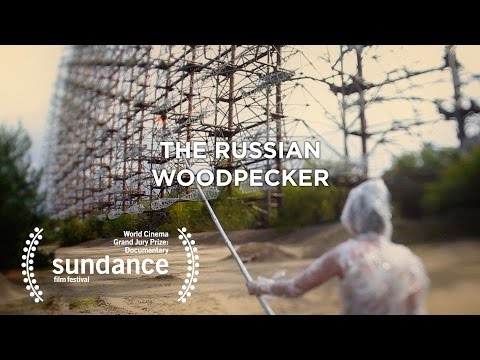
The documentary The Russian Woodpecker explores a conspiracy theory as explained by Ukrainian artist Fodor Alexandrovich. The theory indicates that the meltdown was actually orchestrated in order to cover up the failure of the Russian Woodpecker. The Russian Woodpecker was an array radar meant to detect missiles before they'd even been launched and was so named for the loud tapping sound - similar to a woodpecker pecking on wood - the device made. But it cost 7 billion rubles, and it didn't work. The Woodpecker, formally called Duga-3, was located very near Chernobyl.
Alexandrovich's evidence: The Duga-3 probably didn't work because of the Aurora Borealis messing with signals, which the Soviets may not have accounted for - and it would have been very bad for Soviet leaders to admit they screwed up. Furthermore, Chernobyl's instability was already well-known, as they'd had issues with the reactors before, so a meltdown would make a convincing story.
How likely is this to be true? Well, it's a complicated plan that would have had to be perfectly executed to succeed, and to experts, that seems pretty unlikely. But some weird stuff did supposedly happen while the crew was making the documentary, including visits from the secret police and the sniper shooting of one of the crew members during the Euromaidan protests. However, this isn't the only Chernobyl conspiracy theory that abounds.
- 122,129 VOTES
Seven Survivors Seek Immortality
Video: YouTube
A Russian scientist who managed to survive the disaster moved to a very small Greek island called Gavdos with six other Russian scientists. They easily made a home there, but some conspiracies suggest that the scientists actually went to the island in an attempt to seize control of the earth or to become immortal.
Gavdos has about 50 permanent residents, though it's a popular spot for tourists in the summer. In mythology, the island has been thought of as the real Ogygia, Calypso's mythical island home where the sorceress kept Odysseus captive for seven years.
VICE spoke to a filmmaker making a documentary about "The Immortality Commune of Gavdos," who said that the scientists work on various inventions from inside a compound. They have seven acres of land given to them by a priest, and they are kind to other residents of the island, often working on various projects free of charge.
Some think the Russian scientists are spies, while others think they've survived due to the island's healing properties. But the scientists themselves seem consumed with the idea of immortality and with Greek philosophy. They're even building a temple they call The Temple of Apollo.
- 132,136 VOTES
Aliens Saved Us From An Even Worse Fate
Photo: marioschulz / Pixabay / CC0 1.0There's an alien conspiracy that revolves around Chernobyl. Not that aliens caused the disasters, but that extraterrestrials saved the human race from utter annihilation. According to the conspiracy, people spotted UFOs around the same time as the Chernobyl explosion.
One witness reported seeing an object for about six hours. Those who believe that this object was both real and piloted by aliens suggest that the aliens helped tone down radiation levels, preventing an even larger blast. Though the damage was certainly terrible, it wasn't as apocalyptically bad as believers say it could have been.
A doctor claimed to have seen a similar UFO three years later at a time when a reactor was sending off high radiation levels. Similar conspiracies surround the Fukushima disaster.
- 141,987 VOTES
Chernobyl's Ruin-Photography Is Fake
Photographer Darmon Richter claims the abandoned Chernobyl we often see in photos is not real, but rather a facade meant to make money off of people who love "ruin porn." Richter visited Pripyat and said the city was desolate in many ways and still dangerous. However, he says, a lot of the chilling photos we see online have been manufactured by photographers looking to create the perfect horror:
I observed countless instances of tourists moving these artifacts around, or repositioning furniture for a better shot. I watched a photographer arrange stuffed bears and little dolls so that they sat in line along the edge of a bare, metal-framed bed.
Richter also alleges that the site purposefully profits off of disaster tourists, which he believes approximates 10,000 people per year.
- 151,675 VOTES
Chernobyl HIV
Rumors have spread that Chernobyl survivors and their families have some kind of contagious illness - "Chernobyl HIV" - that can be spread to others. According to former congressman Glen Browder, who wrote about his visit to the area in a blog post for Huffington Post, this stigma impacts the local economy, as companies are less inclined to invest in affected areas.
The fake claim, he explains, contributes to the isolation of those who have already been through something horrible. As Browder notes, the tragedy now affects three generations, with the latest being the "Grandchildren of Chernobyl" - the grandchildren of the original 1986 victims.
Although this term isn't a new concept. Reports dating back to 1990 referred to "Chernobyl-AIDS," or the increase in immune deficiency diseases in the meltdown's wake.
- 161,943 VOTES
Mutant Zombies Stalk Pripyat
Video: YouTube
One common hoax is that the blast mutated humans into flesh-eating zombies that will devour any disaster tourists or researchers that cross their paths. One piece of "evidence" was a grainy video shot from a helicopter that appeared to show said zombies ripping a man apart limb from limb.
In reality, this video was from a 2007 Ukrainian video game called S.T.A.L.K.E.R: Shadow of Chernobyl. In the game, the zombies are mutants that are created after a second disaster, 20 years after the first, during repopulation efforts. Someone later posted the video on YouTube trying to pass it off as real. It's not.
The idea of Chernobyl zombies was revisited in a horror flick called Chernobyl Diaries in which a group of young disaster tourists decide to check out Pripyat, only to - spoiler - get attacked by zombies.


